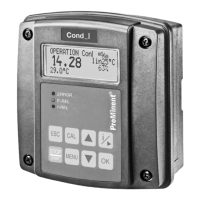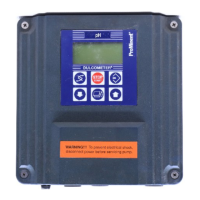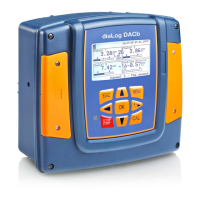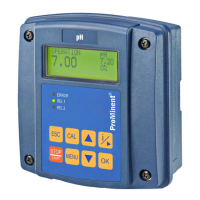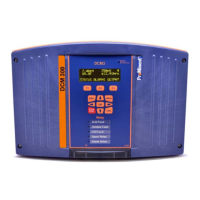Programming the Inputs
Page 51 of 102
9.5.2 Sensor Commissioning
Before putting into operation, the protective
cap or case must be removed from the glass
or metal electrode. The glass or metal
electrode must be free from oil, grease and
other contaminations. Likewise, the diaphragm
of the reference electrode must be free from
scale deposits, dirt or crystallized matter. For
these reasons, electrodes should never be
touched by hand. If contaminations are present
refer to
Chap. 4. and
9.5.3
Calibrating and checking probes
9.5.3.1
Calibrating pH probes
Zero calibration: since pH probes are subject
to certain manufacturing tolerances, they must
be tuned to
the pertinent pH transmitter. The
adjustment intervals depend on relevant
operating conditions. They can vary from a few
days to up to 8 weeks.
Having connected the probe to the transmitter
by means of the probe cable (taking care that
connectors
and cable remain absolutely dry),
dip the probe into a pH 7 standardizing
solution and adjust transmitter
exactly to read
this value.
Remove the probe, rinse it with water,
preferably distilled water, and dry it by
swabbing it with soft, lint free tissue paper.
Immerse the probe in a buffer solution differing
by a least 2 pH from pH 7 and calibrate after
the value on
the display has stabilized. If
within 30 seconds a steady-state value is not
produced or calibration has proved
impossible, clean probe as described in
Section 4 and repeat calibration. If again
unsuccessful, replace probe with a new one.
9.5.3.2
Checking redox/ORP probes
With the probe connected to the controller by
means of the probe cable (taking care that
connectors
and cable remain absolutely dry),
dip the probe into a redox-ORP standard
solution, e.g. of 465 mV.
The reading should reach or exceed this value
within not more than 30 seconds. If the reading
rises rather sluggishly or falls short more than 20
mV, clean the probe as described in Section 4
and repeat check. If again unsuccessful, replace
the probe with a new one, or adjust the ORP set-
point accordingly.
NOTE A calibration of the
transmitter or ORP input driver card
will not normally be required. This
procedure serves as a probe check
only.
9.5.4 Cleaning and servicing probes
All pH and ORP probes should regularly (once a
month) undergo a visual check and be cleaned if
necessary.
If deposits on the glass electrode withstand
cleaning with a soft, moistened cloth, or a soft
toothbrush the following cleaning agents may be
used:

